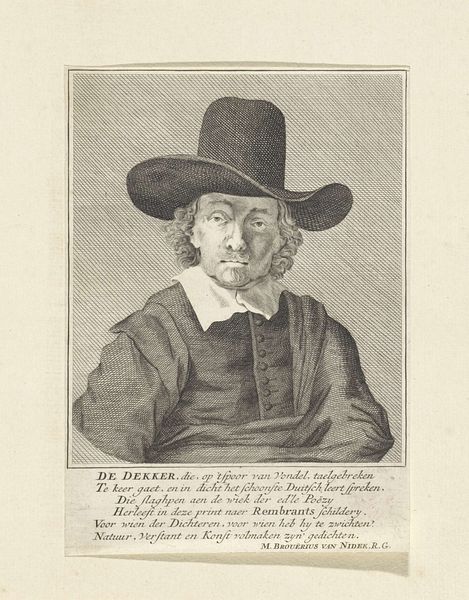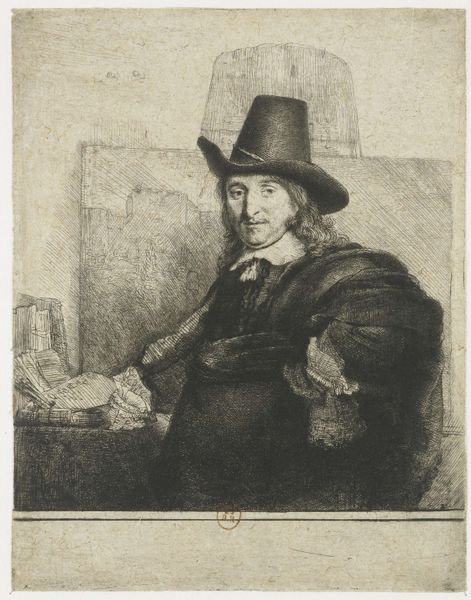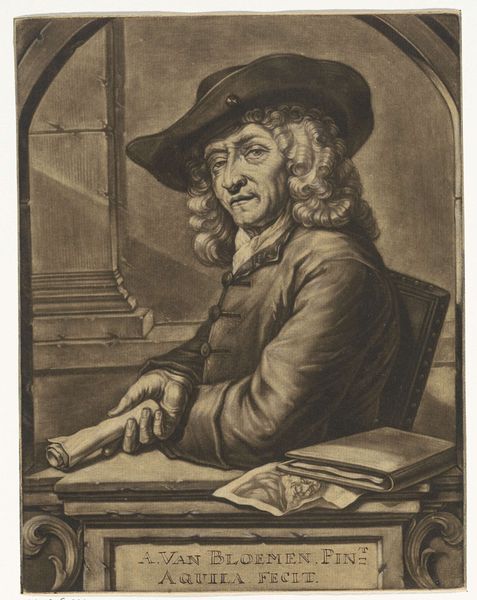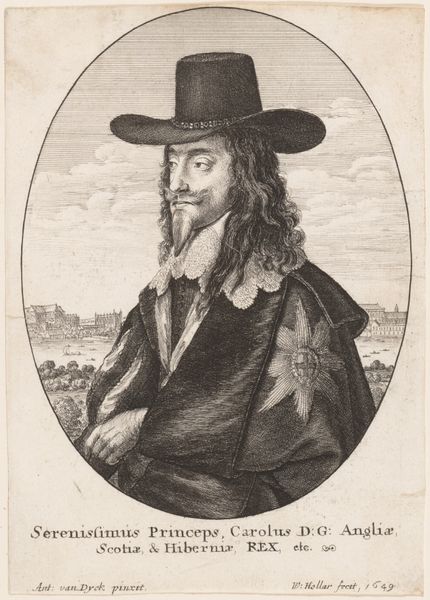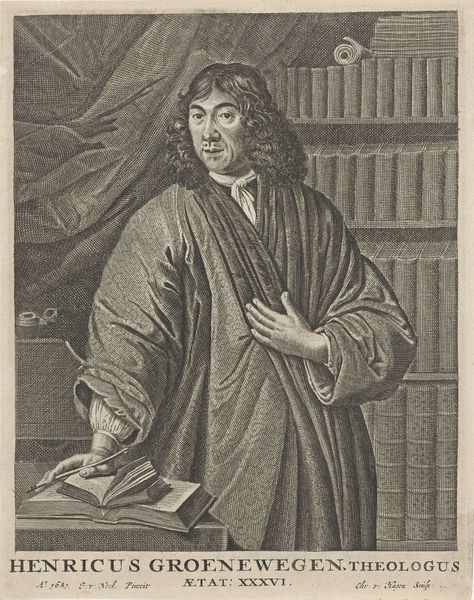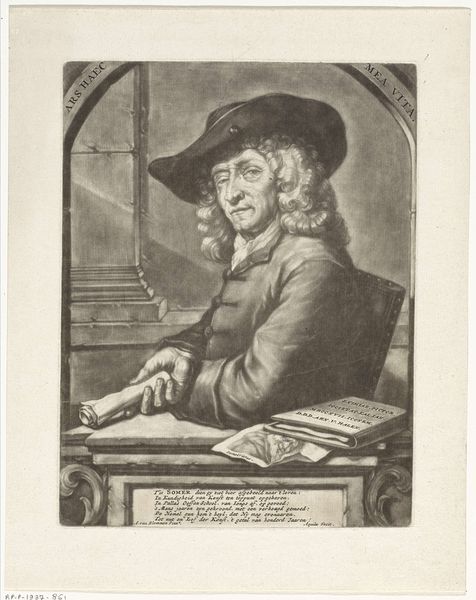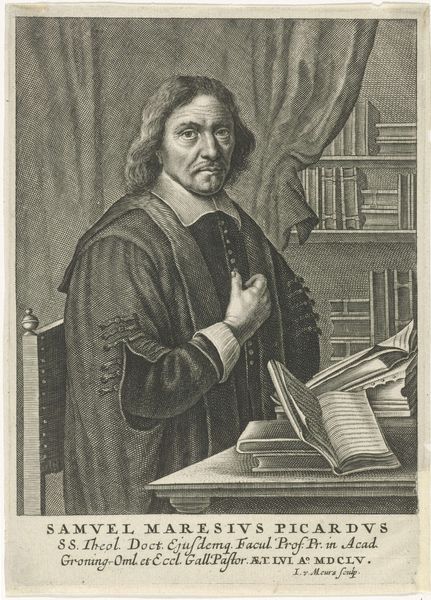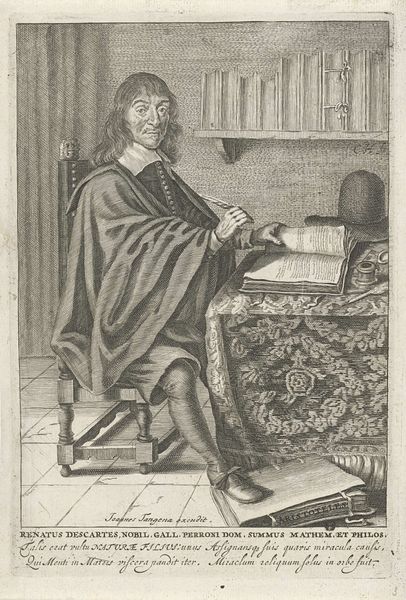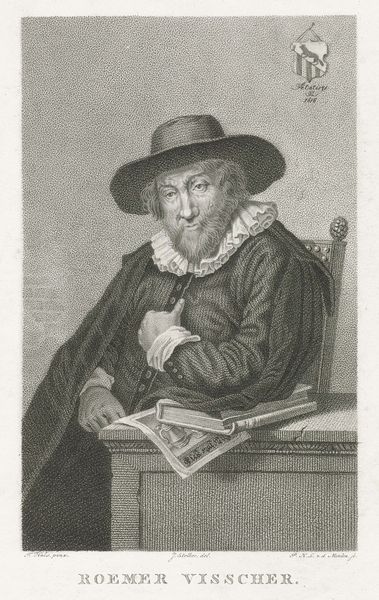
William Dugdale (Gulielmus Dugdale) (from "The Antiquities of Warwickshire Illustrated," London, 1656) 1656
0:00
0:00
drawing, print, engraving
#
portrait
#
drawing
#
baroque
# print
#
old engraving style
#
men
#
portrait drawing
#
history-painting
#
engraving
Dimensions: Sheet: 10 1/16 × 6 9/16 in. (25.5 × 16.7 cm)
Copyright: Public Domain
This engraving of William Dugdale was created in London in 1656 by Wenceslaus Hollar. It is one of many prints made in the 17th century. This artwork was made using the technique of etching, and it has the ability to produce fine and detailed lines through the manipulation of metal plates. The etching process has imbued the print with social significance, in the way that it makes portraits more widely accessible to a growing middle class. It offers a glimpse into the world of 17th-century portraiture. Hollar's skill in capturing Dugdale's likeness, while also hinting at the sitter’s professional status through the inclusion of books and writing implements, shows the rise of printmaking and its role in circulating images and ideas, contributing to a broader culture of knowledge and visual literacy. Therefore, understanding the materials, the making, and the historical context challenges traditional distinctions between fine art and craft.
Comments
No comments
Be the first to comment and join the conversation on the ultimate creative platform.
